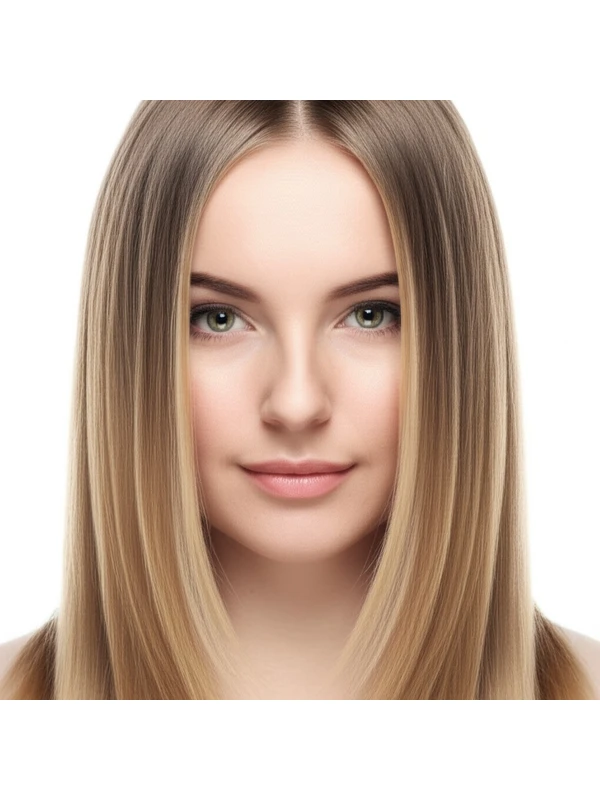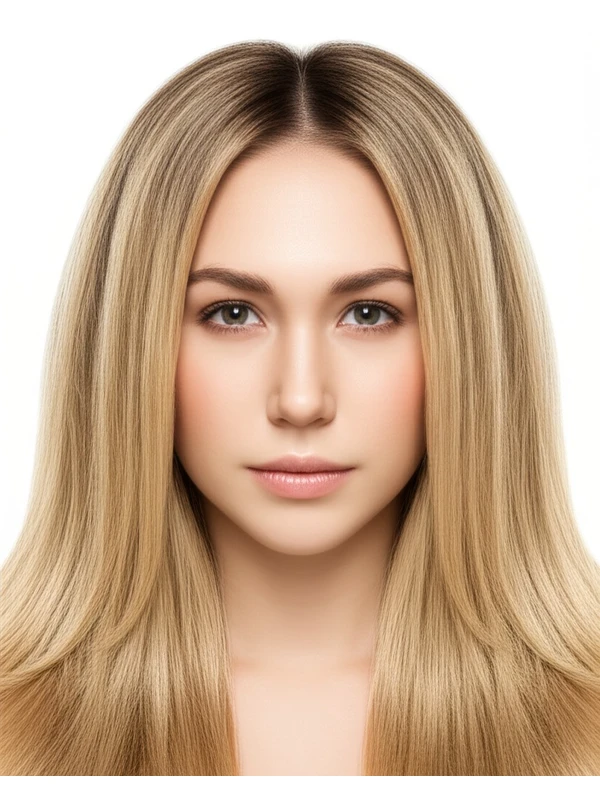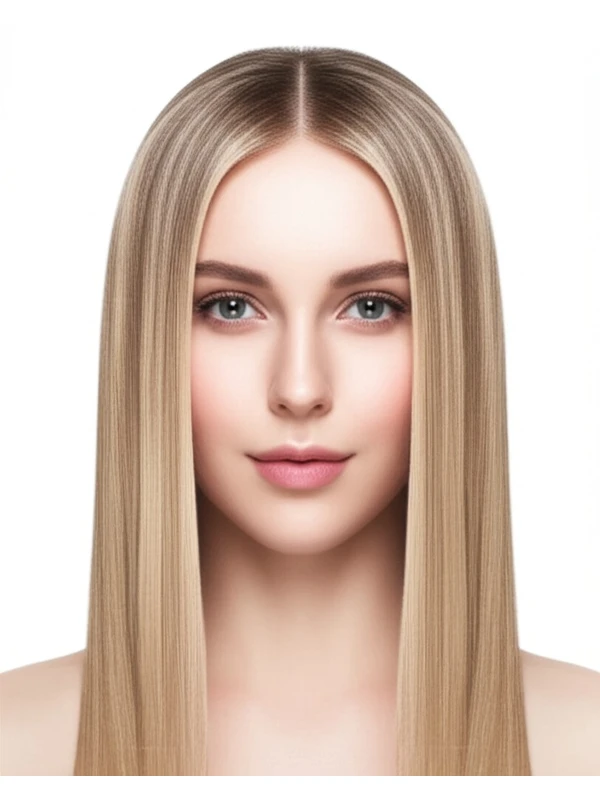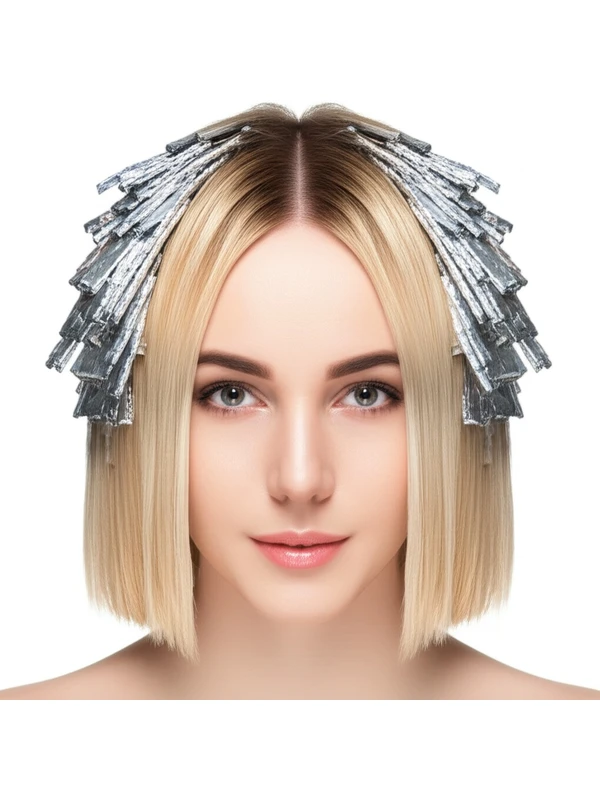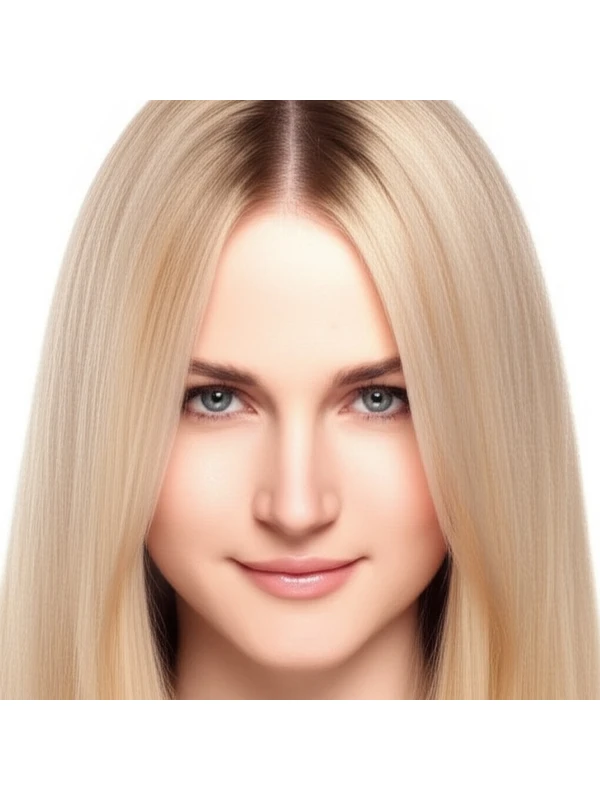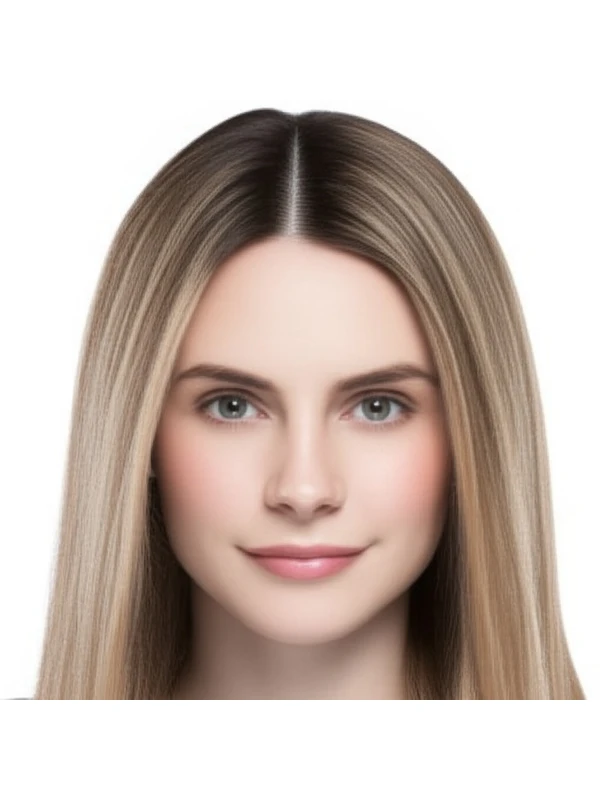#Face Framing Highlights: A Guide to Radiant Dimension
Face-framing highlights are a popular way to add brightness and dimension around your face. They’re versatile and can work on many different hair types and colors. Here's everything you need to know about this technique, from what it is to how to care for the results.
#1. What Are Face Framing Highlights & How Do They Work?
Face-framing highlights focus on lightening strands of hair that fall around your face—typically from just behind your hairline down toward your cheekbones and jawline. The goal isn't a uniform, all-over color change but rather to draw attention to the features and soften facial contours.
Tools & Techniques: Stylists use various tools: foil, balayage brushes, or freehand painting techniques. The choice depends on the desired intensity and effect. Foiling provides more precise placement for brighter results; balayage offers a softer, blended look.
Placement is Key: Strategically placed sections are lifted to create that brightening effect. The stylist will consider your face shape when deciding where to place these highlights—longer faces might benefit from highlights focused on the center of the face, while rounder faces may want them more concentrated towards the sides.
Timing & Processing: The amount of time the product stays in your hair (processing time) determines how light it gets. Your stylist will carefully monitor this to achieve your desired level of lift and tone.
#2. Best Use Cases: What Can Face Framing Highlights Achieve?
Face-framing highlights are incredibly versatile and can accomplish several goals:
- Adding Dimension: They instantly add depth and movement to flat hair, creating a more visually interesting look.
- Root Blurring: When expertly blended, face-framing highlights can soften the line between your natural root color and the lighter pieces.
- Face Framing (Obviously!): They draw attention to your eyes and cheekbones, highlighting your best features. They can also slim or balance facial proportions.
- Coverage: While not a primary goal, strategically placed highlights can help camouflage grays in the front hairline area by blending them into lighter pieces.
#3. Who Suits Face Framing Highlights?
Almost anyone can benefit from face-framing highlights! However, certain factors make them particularly flattering:
- Natural Color Level: Works well on all natural hair colors—from dark brown to blonde. The contrast between your base color and the highlights will determine the overall effect.
- Undertone: Consider your skin's undertone (warm, cool, or neutral). Warmer tones often look beautiful with golden or caramel highlights, while cooler tones can rock ashier or beige shades. A stylist can help you choose a shade that complements your complexion.
- Hair Type/Texture:
- Straight Hair: Highlights will appear more defined and crisp.
- Wavy Hair: Highlights create beautiful shimmer and movement as the hair falls naturally.
- Curly & Coily Hair: Face-framing highlights can add dimension without disrupting curl patterns too much, but careful placement is crucial to avoid uneven lift or damage. Consider a more blended technique like balayage for best results.
- Hair Density: Works on both fine and thick hair. On finer hair, the effect will be subtler; on thicker hair, it can create more noticeable dimension.
- Hair Length: Suitable for all lengths—short bobs to long layers. Shorter styles might require more strategic placement to maximize impact.
- Lifestyle: Ideal for those who want a low-maintenance yet impactful color change.
#4. Face Framing Highlights vs. Similar Techniques
It's easy to get confused with the many hair coloring techniques out there:
- Balayage vs. Foilyage vs. Traditional Highlights: Balayage is a freehand painting technique that creates soft, blended highlights. Foilyage combines balayage application with foil wrapping for more lift and dimension. Traditional highlights involve weaving sections of hair and applying color to them using foils—offering the most precise placement but potentially harsher lines if not done well. Face-framing can be incorporated into any of these techniques.
- Root Smudge vs. Shadow Root: A root smudge involves blending the highlight with the natural root color for a seamless transition, while a shadow root creates a more deliberate contrast between the roots and highlights—a trendy look that allows for longer periods between salon visits. Face-framing can be combined with either technique to enhance dimension around the face.
#5. Maintenance & Longevity
- Salon Timing: Face-framing highlights typically last 4-6 weeks before needing a refresh, depending on how light they are and how quickly your hair grows.
- Toner/Gloss Refresh: To maintain the desired tone (e.g., golden, ash), regular toner or gloss treatments (every 6-8 weeks) help prevent brassiness or unwanted tones from appearing.
- Grow-Out Behavior: Highlights grow out more subtly than a solid color change, which means less frequent touch-ups are needed. The face-framing pieces will gradually blend into your natural hair color over time.
- Budget/Time Planning: The cost of face framing highlights can range from $100-$350+ depending on salon location and stylist experience. Time in the salon typically ranges from 2-4 hours.
#6. At-Home Care Tips
- Wash Cadence: Wash your hair less frequently (2-3 times per week) to preserve color vibrancy.
- Heat Protection: Always use a heat protectant spray before using any styling tools (blow dryer, flat iron, curling iron). Heat can fade highlights and damage hair.
- Color-Safe Care: Use shampoos and conditioners specifically formulated for colored hair. These products are gentler and help prevent color fading. Purple shampoo can neutralize brassy tones in blonde or highlighted hair.
#7. Pros & Cons
Pros:
- Adds dimension and brightness without a drastic all-over change
- Face-framing effect highlights features
- Relatively low maintenance compared to traditional highlighting
- Versatile – works on many hair colors and types
- Softens facial features
Cons:
- Can be expensive depending on salon and stylist.
- Requires regular toner/gloss appointments to maintain tone.
- Potential for damage if not done properly (especially with lighter levels).
#8. Salon Consultation Script Prompts
Your stylist should ask you questions like these:
- What are your hair goals? What look are you trying to achieve?
- Do you have any photos of highlights you admire?
- What is your natural hair color and level (1-10, with 1 being black and 10 being platinum)?
- What is your skin’s undertone – warm, cool, or neutral?
- How much time are you willing to commit to salon appointments and at-home care?
- Are there any areas of your hair that need special attention (e.g., gray coverage)?
#9. FAQs
- Can I do face framing highlights myself at home? While possible, it’s best left to a professional unless you have extensive experience with hair color techniques. Uneven application or damage can easily occur.
- How much lighter will my hair get? This depends on your natural color and the desired level of lift. Your stylist will assess your hair's condition and recommend an appropriate shade.
- Will face framing highlights damage my hair? Any chemical process can cause some degree of damage, but a skilled stylist will use gentle products and techniques to minimize it. Regular deep conditioning treatments are essential for maintaining healthy hair.
- Can I get face-framing highlights if I have dark brown or black hair? Absolutely! The contrast between the darker base color and lighter highlights creates a stunning effect, but it may require multiple sessions to achieve the desired lightness.
- How long do face framing highlights last before needing retouching? Typically 4-6 weeks for optimal results, but this can vary based on hair growth rate and how frequently you wash your hair.
- What's the difference between a shadow root and a smudge? A shadow root has more contrast; a smudge is softer and blends more seamlessly. Both are often used with face-framing highlights to create dimension.
- Can I get face framing highlights if my hair is very damaged? It depends on the extent of the damage. Your stylist will assess your hair’s health and advise whether it's suitable for highlighting, or suggest alternative treatments first.
- Are face-framing highlights suitable for all ages? Yes! The technique can be adapted to suit any age group – from younger individuals wanting a trendy look to more mature clients looking to soften their features.
